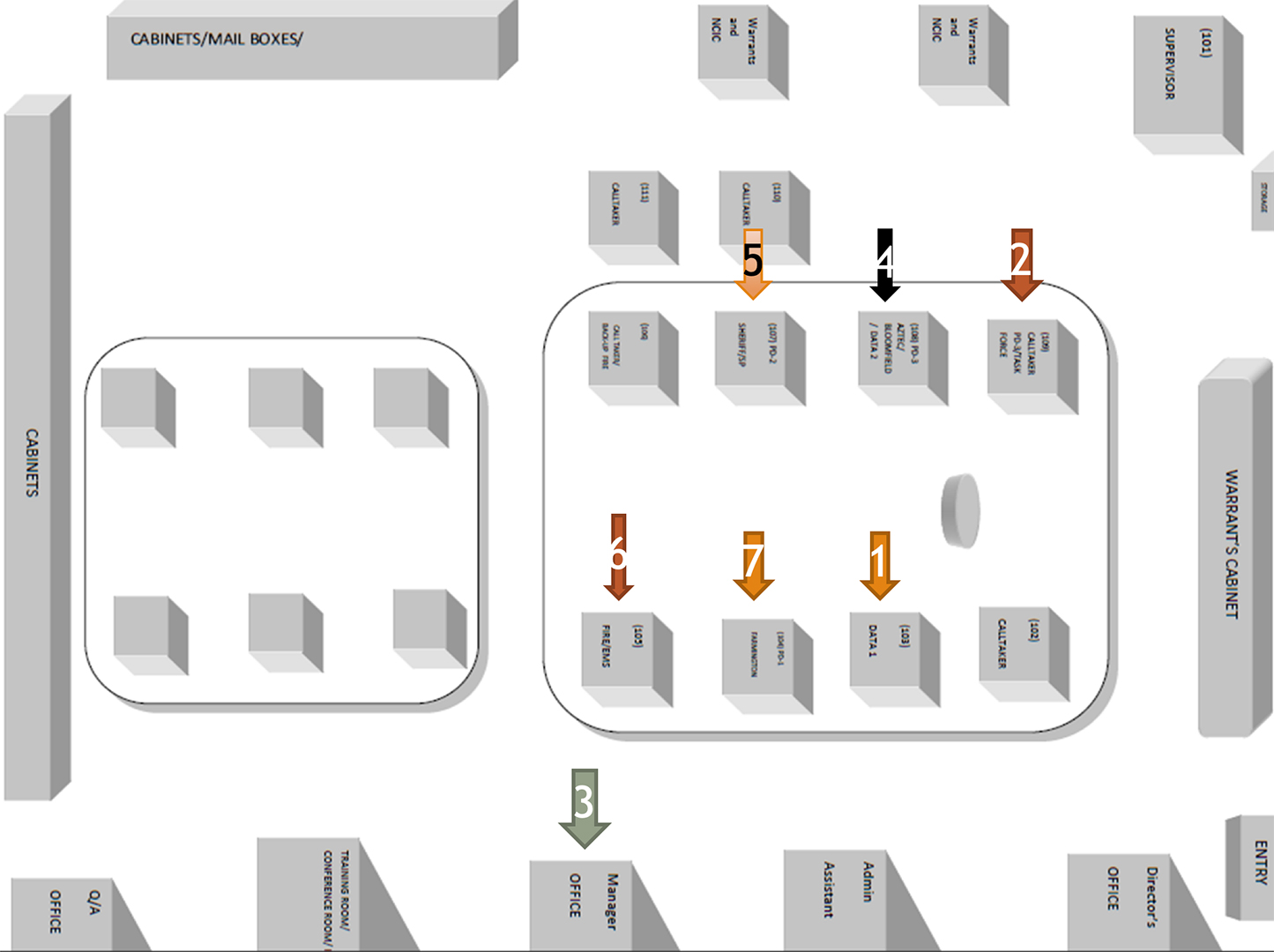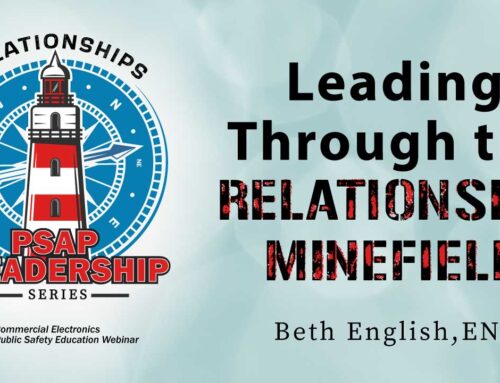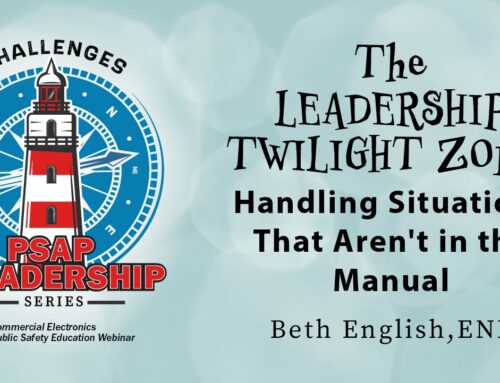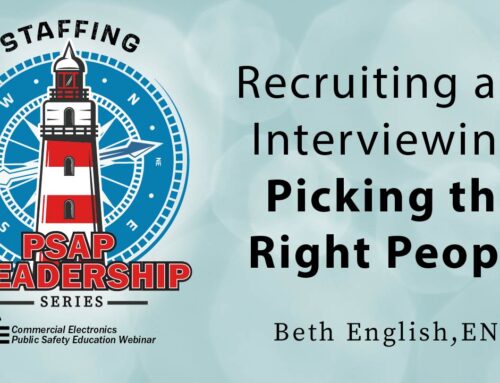“Dispatching is a calling, it is not something that everyone can do. It takes a strong individual dedicated to helping others to the very best of their ability. In order to keep our centers, our agencies, our communities and ourselves out of liability trouble it is imperative we train often and on current events utilizing all available resources. We can never say ‘that won’t happen here’ because we never know what type of calls will happen on any given day so we must always be prepared.” — Tandra Malcom
December 7, 2017, Aztec High School in Aztec, New Mexico experienced a school shooting leaving two students dead and a community in shock. This webinar will give an understanding of this incident from the dispatch center’s perspective including pre-planning, lessons learned and moving forward after the incident.
Our goals for this webinar are:
- Understanding of the incident
- Pre-planning
- Lessons Learned
- Moving Forward
December 7, 2017 Aztec High School in Aztec, NM experienced every student’s, parent’s, school’s, and public safety’s worst nightmare.
Where is Aztec, NM?
Aztec, NM is a rural community in the NW corner of New Mexico in what is commonly referred to as the Four Corners.
The Shooter’s Plan
William Atchison, a 21-year old man, walked into Aztec High School at 08:04 as the students were headed to class. The suspect had been investigated and interviewed prior to December 7th by the FBI and Aztec Police department in reference to comments he had made in an online gaming network about planning a mass shooting. One comment was, “If you’re going to commit a mass shooting, does anyone know about cheap assault rifles?”
The shooter had been planning this event for quite some time. He had multiple pictures of the high school and a step-by-step plan was lined out, and found later in the investigation that followed the shooting.
The Sequence of Events
- The night before Dec. 6: The shooter went to work as planned, at a convenience store/gas station located in Aztec.
- The morning of Dec 7: The shooter returned home from work and went to his room, where his parents thought he stayed; until they were contacted by law enforcement post shooting.
- The shooter entered the school with students before the bell rang. He hid in a restroom until students were in their classrooms. He was gearing up to carry out his plan.
- A male student walked into the restroom where the shooter was waiting. He was immediately shot.
- A custodian was in the area and heard the shots. He tried to warn a female student who was still in the hallway, but it was too late.
- The shooter walked out of the restroom and into the hallway where he shot the female student. (both students passed away from the shootings).
- The custodian communicated to the school secretary, via a handheld radio, to call 9-1-1 due to an active shooter and to lock the school down.
- The secretary immediately locked the school down and called 9-1-1.
- The shooter ran down the hall firing shots into multiple classrooms.
- The custodian remained in the area, following the shooter, updating the secretary.
The Only Call
SJCCA received the 9-1-1 call from the secretary. The information was entered into the computer aided dispatch system within 10 seconds of picking up the line.
- Arrow 1 – supervisor from graves on OT for a 4 hour shift answers the call from the secretary. As I walked by I heard him say, “you hear shots?” We are rural so I didn’t think a lot about it and went on to my office.
- Arrow 2 – on duty floor supervisor for day shift, listening to a trainee doing final sign off, stood up and walked to the middle of the room and looked in my office and said, “Are you direct we have a school shooting?”
- Arrow 3 – Operations Managers Office – I have maintained all of my certifications and am familiar with our phone and CAD systems, so I grabbed my headset and headed to the floor, knowing we would soon be inundated with calls.
- Arrow 4 – day shift dispatcher working the Aztec/Bloomfield Police channel, dispatched the Aztec officers within 30 seconds of the call coming into the dispatch center.
- Arrow 5 – grave shift dispatcher working 4 hours of OT on the Sheriff office channel, dispatched the Sheriff’s office and tracked all other units that responded.
- Arrow 6 – day shift dispatcher working the Fire/EMS channel (Fire/EMS and Air Care)
- Arrow 7 – Trainee doing sign off on Farmington Police channel
There were no Call takers on duty yet.
The Dispatch
Dispatchers immediately sent units to the scene. The first units were on scene where the shooter was within 3 minutes.
We are a combined dispatch center with the ability to send a multiple jurisdiction response from all surrounding agencies. This starts out on their primary channels, but as they arrive on scene the radio traffic goes to one channel, we used the Sheriff’s channel for this incident, with the primary units from Aztec remaining on their primary channel as they did the building search. We did have an issue with the units on the Sheriff’s channel going into the building but not using the Aztec channel, this is a lesson learned (we will talk about that later).
On Scene
Timeline
- Subject entered at 8:04. Law enforcement officers arrived on scene at 8:07.
- The school was on lock down so the doors were locked and officers could not make entry.
- The first unit shot out a window to gain entry. It is believed that this shot to the window was the cue that pushed the shooter into taking his own life.
- Units at this point searched the school for additional potential shooters.
- Outside on the Sheriff’s channel, units were establishing command posts, perimeters, etc. Once it was determined that there was no more active gunfire, teams were put together to make sweeps within the building for primary and secondary searches.
- The gym was being prepared as the initial location for the evacuated students. Once ready, students were evacuated into the gym. They were not allowed to take any bags with them and were searched as they entered. They were surrounded by heavily armed officers.
- Multiple units on scene had children in the school. They were working very diligently to maintain stability on scene while worrying about their children inside (point to think about).
What happened in the center?
Some employees heard the incident over their personal scanner and came into work without being called. Others called to see if we needed extra employees on the dispatch floor before responding. Between the two supervisors on the floor at the time, we were able to call in the complete next shift and the on call for the shift. Employees were simply told that there had been a shooting at Aztec High School and to come into work immediately for extra manpower.
PIOs with San Juan County Office of Emergency Management arrived at dispatch and were placed in the Tactical Operations Center (TOC). As the Unified Command was set up on scene, each agency sent a member to the TOC to operate from there. Tactical dispatch was in the TOC to operate as a liaison between the personnel and dispatch.
All the dispatchers who were on the floor at the time of the call were relieved as soon as the scene was secured. This was for debrief purposes, and to let them leave if they felt they needed to.
Training for the Event
Table Top Exercises and Drills
San Juan County began going to the schools 12 years ago to do table top exercises with them on what to expect in an active shooter situation. We go over everything from the 911 call (who can make it) to what happens when Police, Fire and EMS get on scene. We also involved the school district in the exercises and drills. Since teachers are caregivers, their instinct is to protect the children. We had to explain to them that in an active shooter situation, we would be stepping over an injured student to get to the shooter. And because the school Superintendent took the table tops and drills to heart, he saved lives. We learned, “You work like you practice, so practice like it is real”.
Training with the Agencies
Dispatch should always train with the agencies. This allows everyone to get to know everyone else and allows dispatchers to get an idea of what is going on with the scene and why the agency/agencies do things the way they do. It also allows agencies to work in different locations throughout the jurisdiction to see how the radio communication is before an incident. We found a couple of areas in our county where new repeaters have had to go up. We also made sure that all admin and teachers in SJC schools have radios and radio training. This gets information out very quickly allowing responders the chance to get to the scene quicker.
Lessons Learned
- Get a secondary channel up and ready to take on the incident. Calls don’t stop coming in just because a major incident is happening, and we still have to take care of the public.
- Get your people off the radios who worked the incident, let them debrief, and give them time.
- Keep your administrators contained. They make dispatchers nervous when they stand in front or behind them, and this is the last thing they need. While I was on the floor, the Director did not come onto the floor, he stayed in front of me and I answered his questions.
- Mental health is huge, keep an eye on your employees. Refer them to counseling if they need it. We had one dispatcher that we had to sit her down and let her listen to how she worked the channel, she thought she had missed something, but she didn’t.
Reunification
When the situation is over, what do you do with the students? This was something we had never trained for. We just assumed that once the situation was over, everyone would go home and it would be over.
Aztec High School had 900 students. With each set of parents that was 1800 parents. If there were two sets, that was 3600 parents. This didn’t include grandparents, aunts, uncles, etc. that might show up. So where was this to happen? The location had to be large enough to house everyone and have enough parking. We also needed the media as far away from the students and parents as possible.
The reunification was eventually determined to be at a large facility miles away within the same county. This was a difficult decision as it meant the parents/relatives would have to go out of the city to get their kids. We also had to get the information out quickly, otherwise social media would drive the calls with bad information going out. Once the decision was made, the students were put in alphabetical order and loaded on buses to be taken to the facility and parents were notified to pick up their children at that location.
Moving Forward
We have continued the training with Safe School meetings, table top exercises on reunifications, and school drills during summer with no students so agencies can get inside. We have also continued having meetings with the public so they know what we are doing and why.
This is everyone’s worst case scenario and no one wants to be in this situation. Be prepared anyway. Don’t say, “It won’t ever happen here.” Say, “If it happens here, we will be as ready as we can be”.
Presented by Tandra K. Malcom, Operations Manager, San Juan County Communications Authority
Located in the Northwest corner of New Mexico in what is commonly referred to as the Four Corners, Aztec is a small community of about 6,500 people. The City of Aztec Police and Fire departments are dispatched by a combined communications center that also serves the City of Farmington, the City of Bloomfield, and San Juan County, handling Police, Fire, and EMS.







